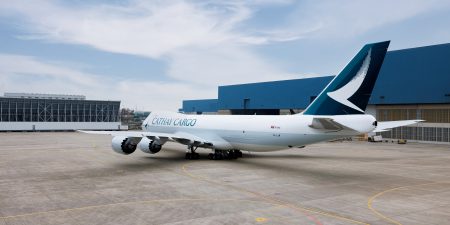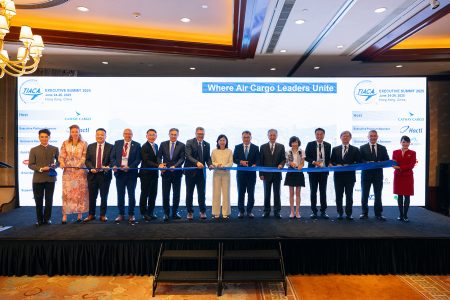The International Air Cargo Association (TIACA) held its Executive Summit in Hong Kong in June, giving Cathay Cargo – the event’s official host – an opportunity to showcase the city’s logistics pedigree. Each year, the TIACA Executive Summit brings together senior stakeholders from across the air cargo ecosystem, including airlines, forwarders, service providers and suppliers. Hong Kong’s position as the world’s busiest air cargo hub by tonnage and its links with the Greater Bay Area (GBA) — made it the ideal venue.
Director Cathay Cargo Tom Owen reflected on these advantages in his welcoming remarks. “Our location in the heart of Asia, robust logistics ecosystem, world-class facilities and infrastructure, and role as a super-connector between the Chinese Mainland and the world, make Hong Kong a pivotal hub for global trade flows,” he said.
Delegates got a taste of this with a pre-event tour of the Cathay Cargo Terminal on the eve of the main sessions.
Hong Kong connectivity
The expansion of Hong Kong’s airport was a hot topic; Cissy Chan, Executive Director, Commercial at HKIA, outlined how the Three Runway System has elevated the hub’s cargo capacity to a potential 10 million tonnes a year. The Hong Kong SAR Government’s Secretary for Transport and Logistics Mable Chan, JP, detailed efforts to further develop the city’s logistics industry, particularly during this period of global economic uncertainty.
“We are aggressively expanding the number of destinations we serve through the Three Runway System,” she said. “We have also been working with the Civil Aviation Department to put in place a streamlined process to approve additional flights and charters. This process is particularly pivotal to our forwarders and operators to meet the fast-changing demand in supply chain fluctuations.”
Both also alluded to Hong Kong’s role as a GBA gateway; notably, the HKIA cargo facility in Dongguan – which enables direct sea-air transfers of built-up and bonded cargo to and from HKIA via the Cathay Cargo Terminal Dongguan.






_on_board_the_Cathay_Cargo_hosted_harbour_cruise-CX-Inline5.jpg/_jcr_content/renditions/cq5dam.rendition.450.300.jpg)



